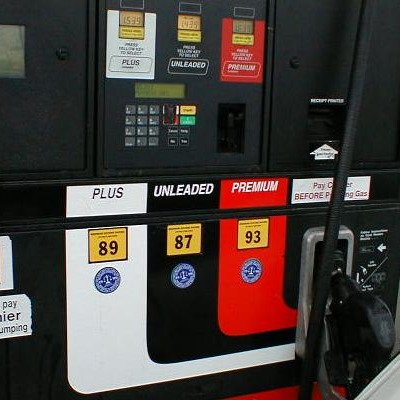West Coast Spikes lead to Higher Pump Prices Nationwide

(PORTLAND, Ore) — “Oregon has the dubious distinction of having the second-largest weekly increase in gas prices in the nation this week. Skyrocketing prices in West coast markets due to refinery outages and operational issues are putting upward pressure on the national average for regular unleaded. For the week, the national average jumps 13 cents to $2.44 a gallon. Oregon’s average soars 34 cents to $2.82 a gallon. These are the largest weekly spikes since July 2013,” says AAA Oregon/Idaho Public Affairs Director Marie Dodds. “The national average has moved higher for 36 consecutive days, and the Oregon average has increased for 29 consecutive days; these are the longest streaks of increases since February 2013.”
Gas prices normally rise between 30 and 50 cents during the late winter and spring as refineries conduct seasonal maintenance in order to prepare for production of summer-blend fuel as required by the Environmental Protection Agency. Unexpected refinery outages on the West Coast have exacerbated seasonal production declines, and the price at the pump has jumped significantly higher in impacted markets. Drivers in California have been subject to the most dramatic increases. Average price for retail gasoline in the state climbed by 13 cents over a 24-hour period due to supply shortages and the impact of last week’s explosion at ExxonMobil’s refinery in Torrance, California, and the broader price impact is currently being felt in a number of West Coast markets including Oregon.
California ($3.41) has unseated Hawaii ($3.06) as the nation’s most expensive market for retail gasoline for the first time since October 2012. Unlike other states, California cannot easily import gasoline from neighboring markets due to environmental regulations that require specialized fuel blends in the state. The neighboring states of Oregon ($2.82), Nevada ($2.81), and Washington ($2.76) have also been impacted by the regional production issues, and are joined by Alaska ($2.81) as the nation’s most expensive markets for retail gasoline.
No state is posting an average below $2 per gallon. Motorists in Utah ($2.10), Wyoming ($2.11) and Idaho ($2.11) are paying the least per gallon to refuel their vehicles.
Retail averages have moved higher in every state and Washington, D.C. over the past week. Consumers on the West Coast have seen the sharpest increases in the price at the pump over this period, led by: California (+43 cents), Oregon (+34 cents) and Washington (+30 cents). The price is up by a dime or more per gallon in 20 states, and drivers in 47 states and Washington, D.C. are paying at least a nickel more per gallon to refuel their vehicles versus one week ago. This trend also holds true for two-week price comparisons, where 44 states are posting premiums of a dime or more per gallon. The largest two-week increases have also taken place in California (+59 cents), Oregon (+42 cents) and Washington (+38 cents).
With the exception of Hawaii (-9 cents), monthly comparisons show consumers are paying more to refuel their vehicles than one month ago. Month-over-month prices are up by more than a dime per gallon in 48 states and Washington, D.C., and 38 states are registering premiums of a quarter or more per gallon. Drivers in California (+95 cents), Oregon (+66 cents), Washington (+59 cents) and Nevada (+58 cents) have the largest increases during this period.
Production concerns in California, along with the broader impact of seasonal refinery maintenance, have further eroded the year-over-year savings experienced by many drivers nationwide. Although the price at the pump remains discounted in every state and Washington, D.C., six fewer markets (40) than one week ago are posting yearly savings of $1 or more per gallon. While yearly discounts are narrowing, five states continue to post savings of $1.25 or more: Colorado, Michigan, Connecticut, Idaho and Utah.
Volatility remains a central theme in the global oil market, and reports of increased production from Libya and a rise in exports from Iraq will likely keep global prices on the move. U.S. production companies are beginning to scale back plans for exploration and production, and the number of U.S. oil rigs in operation continues to decrease in light of shrinking profit margins and the global market’s continuing oversupply. Nevertheless, production remains high and stocks continue to build. This abundance in domestic production is widening the gap between the domestic benchmark WTI and its global counterpart Brent crude. The gap in price, which is now approximately $13 per barrel, is viewed by analysts as an advantage for U.S. refineries.
At the close of Friday’s formal trading on the NYMEX, WTI was up $1.59 settling at $49.76 per barrel. WTI prices are slightly lower to start this week, falling 17 cents to $49.59 per barrel at the close of Monday’s trading. Today WTI is trading around $50 a barrel, same as a week ago. Crude prices are about the same as a month ago and are about $53 lower than a year ago.
For the 17th week in a row, there are no states with an average price for regular unleaded at or above $4 a gallon. Forty-eight states and Washington D.C. have averages below $3 per gallon, down from 49 states a week ago. No states are below $2 a gallon, down from two a week ago.
After 122 consecutive weeks, California bumps Hawaii as the state with the most expensive gasoline in the country at $3.41 a gallon, followed by Hawaii at $3.06, Oregon at $2.82 (up 34 cents and up from sixth last week), Nevada at $2.81, and Alaska at $2.81. Washington is sixth up from ninth last week at $2.76 (up 30 cents). Idaho is 49th up from 50th at $2.11 (up 15 cents). Utah has the cheapest gas in the nation for the third week in a row at $2.10 a gallon (up 15 cents).
Diesel prices are also moving higher. The national average adds four cents to $2.92 a gallon. Oregon’s average jumps six cents to $2.94. Diesel is at or above $4 a gallon in just one state, same as last week. Hawaii is most expensive at $4.50, followed by Pennsylvania at $3.41, New York at $3.39, Connecticut at $3.39, and Maine at $3.37. California is seventh down from fifth last week at $3.29 (up a nickel). Washington is 14th for the third week in a row at $3.03 (up eight cents). Oregon is 19th up from 23rd last week. Idaho is 34th up from 35th last week at $2.81 (up four cents). A year ago, the national average for diesel was $4.00 and Oregon's was $3.91.
Source: AAA



